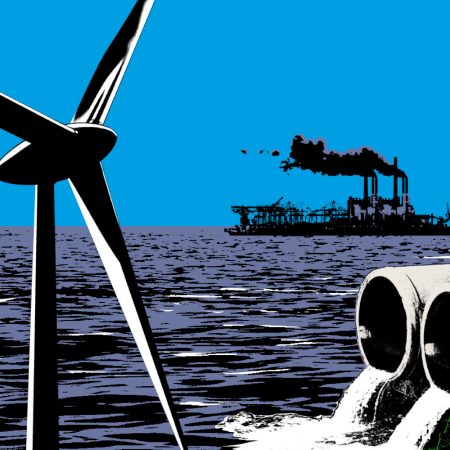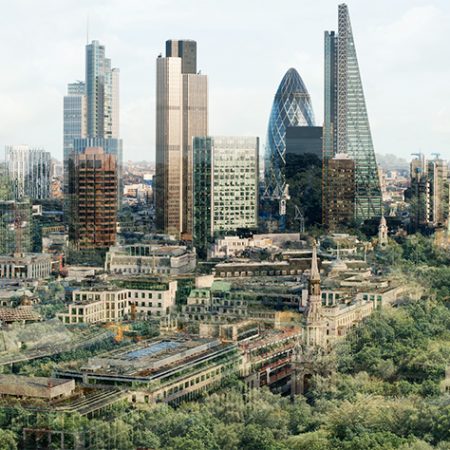Wildfires are one of the most immediate and destructive symptoms of a warming planet. As temperatures rise, they become both more frequent and more severe.
Wildfires burned 7.5 million acres of land in the US in 2022 and destroyed a fifth of Australia’s trees during the 2019/2020 bushfire season. Eight of California’s 10 most severe wildfires on record since 1932 have happened in the past six years.
They’re also becoming increasingly unpredictable. New and larger areas are being affected and occurrences are not restricted to the summer months.
Climate change and land-use change are projected to only make wildfires more frequent and intense. The UN Environment Programme (UNEP) and GRID-Arendal predict a global increase in extreme fires of up to 14 per cent by 2030, 30 per cent by the end of 2050 and 50 per cent by the end of the century. This will have significant economic consequences. Between 2010 and 2019 the global economic damage attributed to wildfires increased by 195%.
Total global economic damage from wildfires
Source: EM-DAT, CRED / Université catholique de Louvain, Brussels (Belgium) by OurWorldInData.org/natural-disasters
So what does this mean for real estate? The severe destruction often caused by wildfires means that investment decisions will have to be based on a deep understanding of future risk.
Resilience metrics are likely to become part of any land or property search criteria. Property investors can now analyse various datasets – including weather patterns, environmental factors and historical disaster records – to evaluate both present and future climate-related risks, and make informed decisions regarding their investments. This enhanced understanding of climate risks encourages more sustainable and resilient investment strategies in the face of a changing climate.
Mitigating the threat
According to research carried out by the Boston Consulting Group for the WWF, humans are responsible for 75 per cent of all wildfires. That can be the result of accidents, negligence, arson, or land use strategies.
Aside from any tragic loss of life, wildfires can have a serious impact on ecosystems, infrastructure, buildings and local economies. Over time, the risk (or perceived risk) of wildfires can lead to loss of value and higher insurance costs in affected areas. Although the Californian fire seasons of 2017 and 2018 burned through a combined area of less than 1.5m hectares, AON estimates the total insured loss to be about $31 billion, due to the density of the built environment.
As the world warms, wildfire risk is something many of us will have to learn to live with. It is already prevalent in some of the most popular residential areas of the world, such as southern California, the Mediterranean and many parts of Australia.
Both investors and building users will increasingly want to see serious and well-considered prevention and mitigation strategies at national, city and community level.
There is much to be done to reduce the wildfire threat, particularly in vulnerable areas, and education as well as regulation have huge roles to play.
Creating resilient properties and prepared communities
With that in mind, investors may look to public authorities to help guide investment decisions. How seriously do they take the threat? How comprehensive are public awareness programmes? How resilient is the local infrastructure?
The latest UN report on the spreading threat of wildfires, calls on governments to adopt a new ‘Fire Ready Formula’, whereby two-thirds of spending is devoted to planning, prevention, preparedness and recovery, and one-third to response. Planning currently receives less than 1 per cent, while response typically receives more than half the available funds.
As with so much surrounding climate change, resilience is key. But what does ‘resilience’ mean? A recent report by the Potsdam Institute for Climate Impact Research (PIK), defines resilience as having the capacities to live and develop with change and uncertainty, rather than ‘bouncing back’ from a shock.
After the catastrophic events of 2019/2020, some Australian states tightened their building regulations in bushfire-prone regions. Australia’s National Construction Code now stipulates fireproof building materials, design and construction, and insists on a minimum distance between vegetation and buildings. Installation of fire protection systems and emergency exits is also mandatory.
These kinds of mitigations are especially important where buildings spring up near wilderness, many of which are likely to be tourist attractions. Adoption of the International Wildland-Urban Interface Code (IWUIC), which includes stipulations around water supply, emergency access, and defensible space, helps protect these spaces.
A collaborative approach
Cities and regions must focus on prevention and risk mitigation to lessen the effects of heatwaves and wildfires. With scientists from PIK forecasting 2024 could be the hottest year on record, that focus cannot come too soon.
That forecast is largely down to the strong likelihood of an El Niño event in 2023, the effects of which are typically felt the following year. The current hottest year on record, 2016 followed a strong El Niño in 2015.
Wildfires are becoming more destructive and frequent, and their financial, social and environmental impact extends well into the future. They also have a negative impact on the environment, releasing millions of extra tonnes of carbon and destroying biodiversity.
A proactive response at national, local and community level can significantly reduce risk and reassure those who live, work and invest in the region. For property to retain value it must be in harmony with those goals.
Number of large wildfire disasters worldwide
Source: IMF; EM-DAT; Catholic University of Louvain (CRED) via Statista



